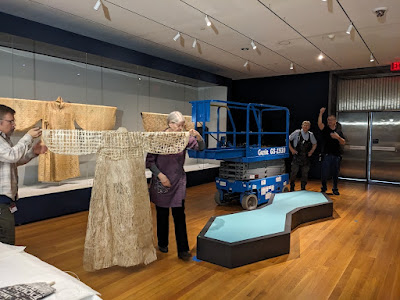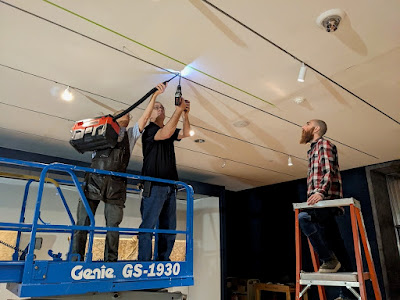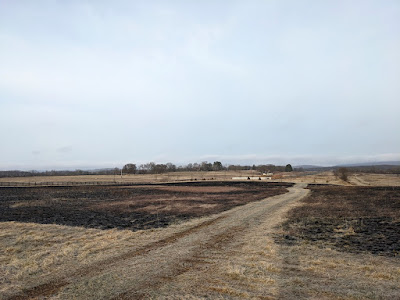Ever since coming home from Virginia in Feb, I've been grinding, whether making more books (I finished 20 in 7 weeks), going to acupuncture and other people to help with the congenital bone deformity that led to arthritis, and gobs of admin. But the big work all along is and has been prepping for the big Korean couture show at the Cleveland Museum of Art that opens in a few days, on Sunday!
Fortunately, they invited me to help dress my two pieces. First each separately had to be set to figure out where the ceiling anchors would go.
Robin, the textile conservator, is at the bottom of this skirt, and Philip, the mount maker, is in the middle above.
I think I saw four preparators in the whole gallery. This is the one you walk into at the front of the exhibit, which opens up into a larger gallery with the contemporary designers' looks. We also had the registrar, exhibit designer, and fashion curator on hand.
I think of whenever I do this, I have to do the job of all these people by myself! Sans cherry picker (and not even that nice ladder with a deck at top.
Philip is vacuuming any debris from drilling the holes (green tape marks the center of the deck below), and the deck is covered with plastic to minimize dust during install before all the drilling.
This is my least favorite part of hanging, when you have to make sure the threads are just the right length. So glad it wasn't me up there.
The hanji dress was easy but because of the nature of this bark one, there was a lot of back and forth about minute leveling. It's hung at an angle from the Korean 17th century pieces behind it in the case so my sightlines were confused.
Philip very kindly called me over when they were installing the anchors so that I could see what kind of hardware they use in the ceiling. Here, he's making sure they are screwed tight before he clears out, since we found out near the end that we needed make way for a private walk through.
I'm so gratified that these dresses have their first exhibition in a show that surrounds them with these tomb excavated garments from Korea—which are also having their first showing in the US here. The bark dress was made like this, and the hanji one like that.
I'll be at the museum during the day when the show opens this Sunday, but you can visit anytime for free through Oct 13.
I'll also be at MIX on Fri, May 3 in a brand-new hanji jacket, the ghost print of the two dresses in the show.
There's a virtual lunchtime lecture about the show, hosted by the curators, on Tues, May 7 at noon.
And I'll do a demo/interactive event making bark lace in the museum atrium on Sat, May 18 from 11am to 4pm! You can make bark lace as we work on a communal panel, or view my bark lace printed art very close up, see books and samples, and touch related samples from the museum's education collection.






















































